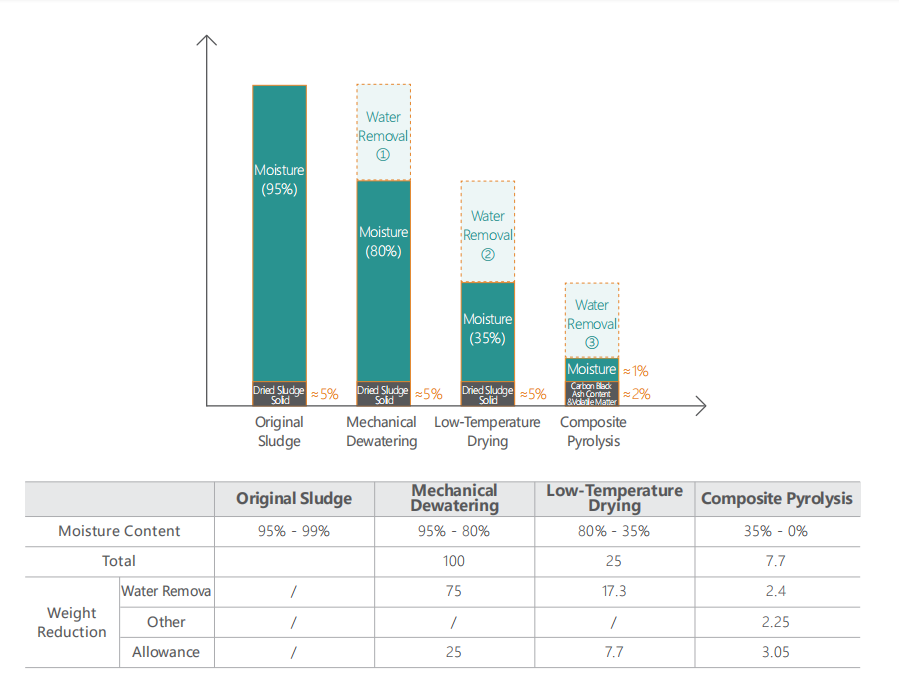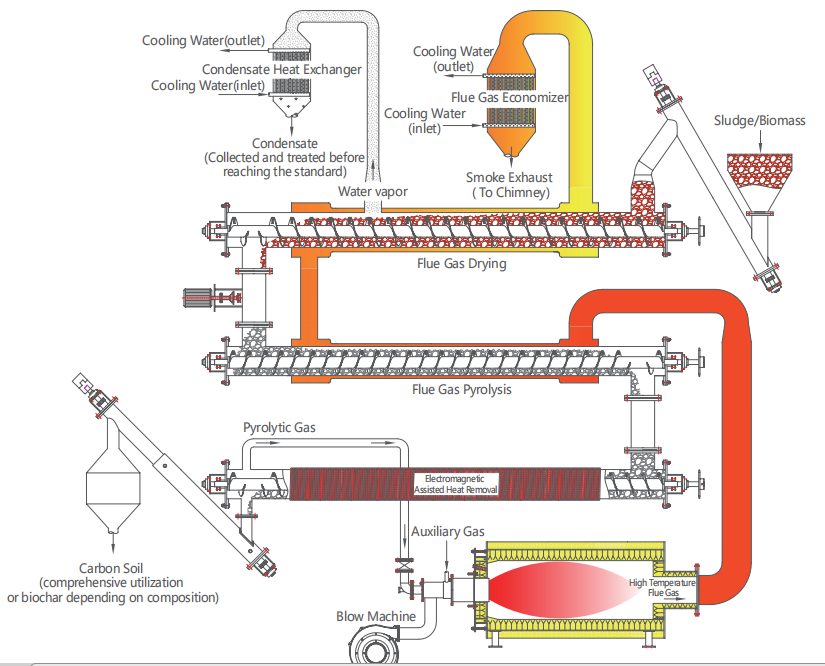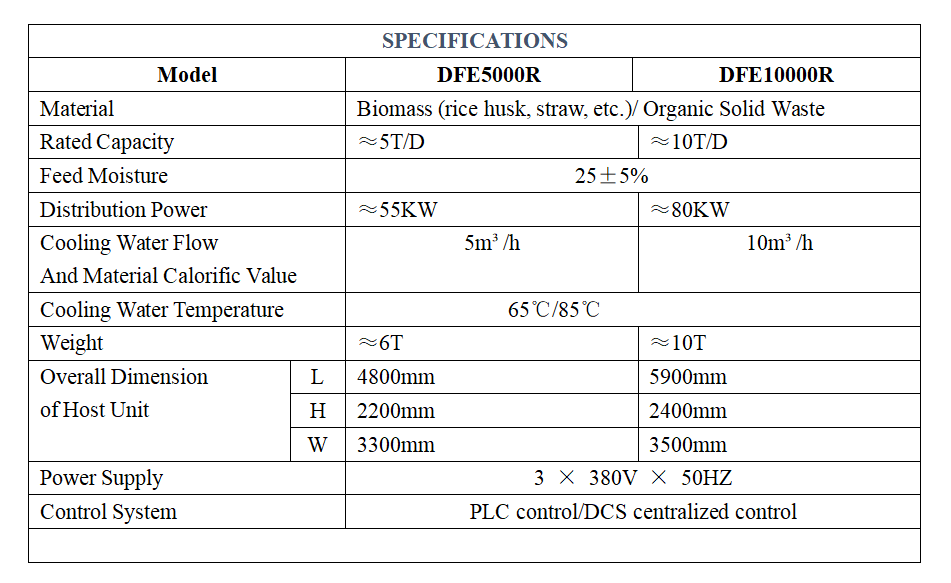 Drying Technology
Drying Technology
High Efficiency:
Used for the disposal of various solid wastes, sludge and biomass (straw, fruit shell). After pyrolysis, weight and volume of the materials reduced by more than 50%, biomass reduced by more than 70%.
Energy Saving:
Pyrolysis makes full use of the heat generated by the gasification and combustion of organic substances in organic solid waste for pyrolysis and gasification reaction; Evaporated water vapor is recycled in multiple ways to achieve ultra-low temperature and up-to-standard emission. The hot water generated in the disposal process is used for drying the front-end materials, which can effectively reduce the total energy consumption and operating costs of solid waste
Safety :
PLC or DCS fully automatic control, multiple safety protection device (pressure and temperature dual control)

BENEFIT ECONOMY ANALYSIS
 Used to treat solid wastes such as sludge, biomass (straw, husk, husk) with moisture content ≤ 30%. The heat released by the combustion of combustible gas generated by the pyrolysis reaction of organic substances is used as the main heat source to supply the heat required in the pyrolysis reaction process (according to the different calorific value of materials, to supply auxiliary gas, electromagnetic heating and other auxiliary energy). Solid substances after pyrolysis used for building materials, activated carbon, agricultural organic fertilizer, etc.
Used to treat solid wastes such as sludge, biomass (straw, husk, husk) with moisture content ≤ 30%. The heat released by the combustion of combustible gas generated by the pyrolysis reaction of organic substances is used as the main heat source to supply the heat required in the pyrolysis reaction process (according to the different calorific value of materials, to supply auxiliary gas, electromagnetic heating and other auxiliary energy). Solid substances after pyrolysis used for building materials, activated carbon, agricultural organic fertilizer, etc. 
Lifted material from the feed bin to the composite pyrolysis machine, then passes through the flue gas heating spiral (heating and evaporation period), flue gas pyrolysis spiral, electromagnetic pyrolysis spiral (pyrolysis and gasification period). The material is heated from room temperature to a maximum of 800 ℃, water content is reduced to less than 0.1%. By pyrolysising and gasifying to generate gas containing CO2, CO, CH4, H2, etc., which is sent to the combustion chamber for burning, generates high temperature flue gas of about 1000 ℃, reduce to 200 ℃ through flue gas pyrolysis spiral and flue gas heating spiral in turn, and enters the flue gas heat recovery heat exchanger to generate hot water for drying at the front end. The water vapor evaporated by the flue gas heating material is recycled by the condensation heat exchanger

